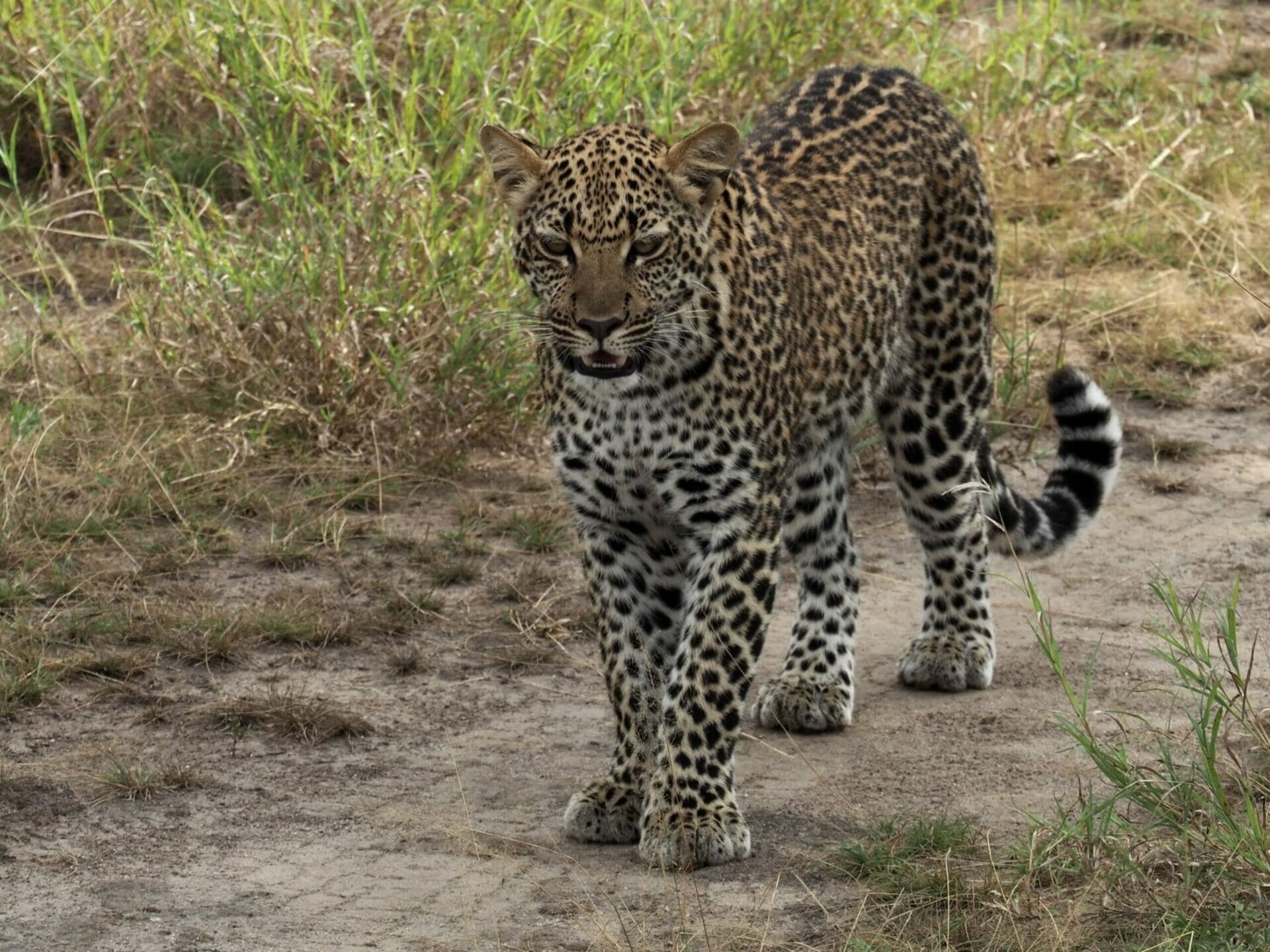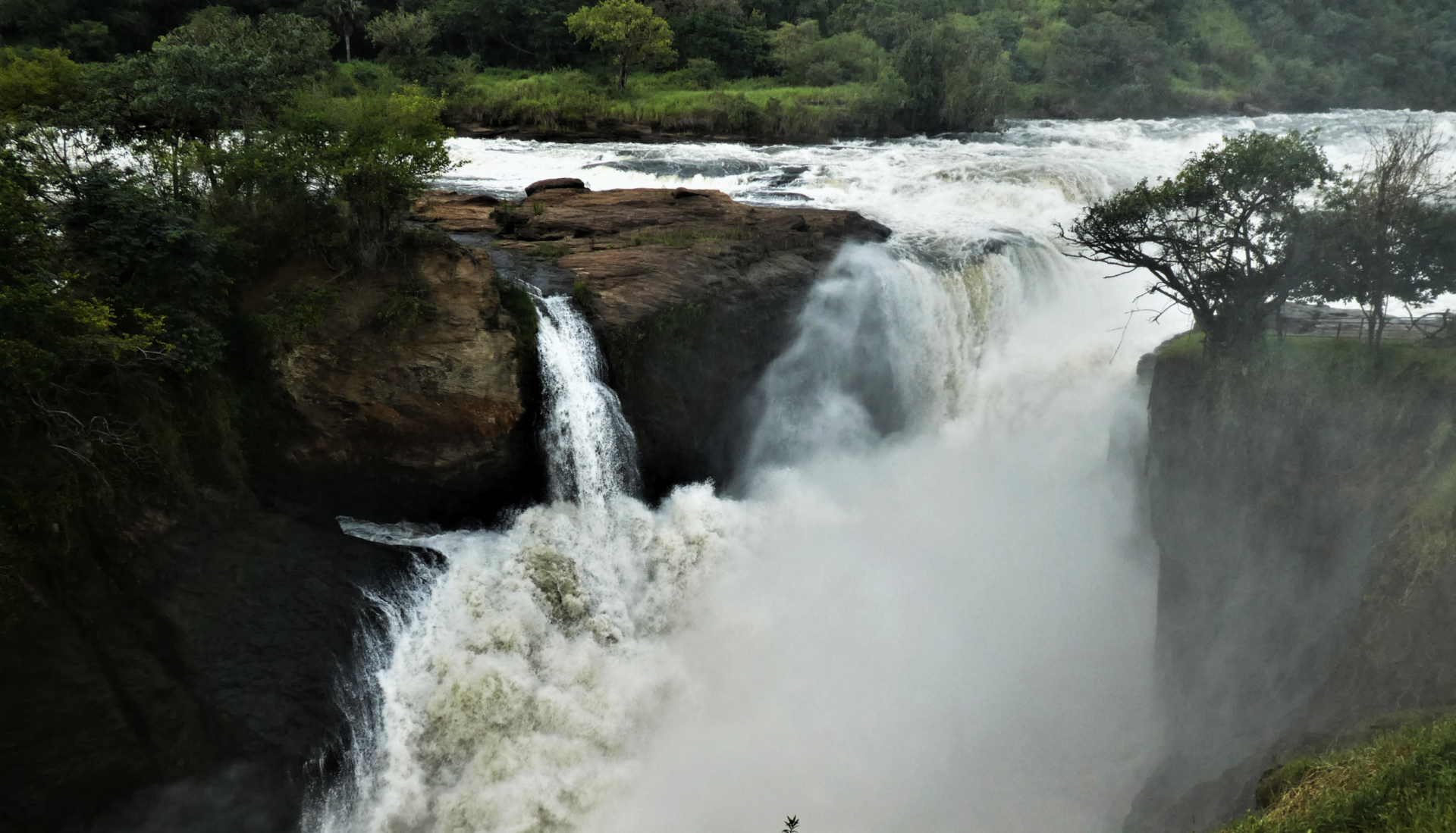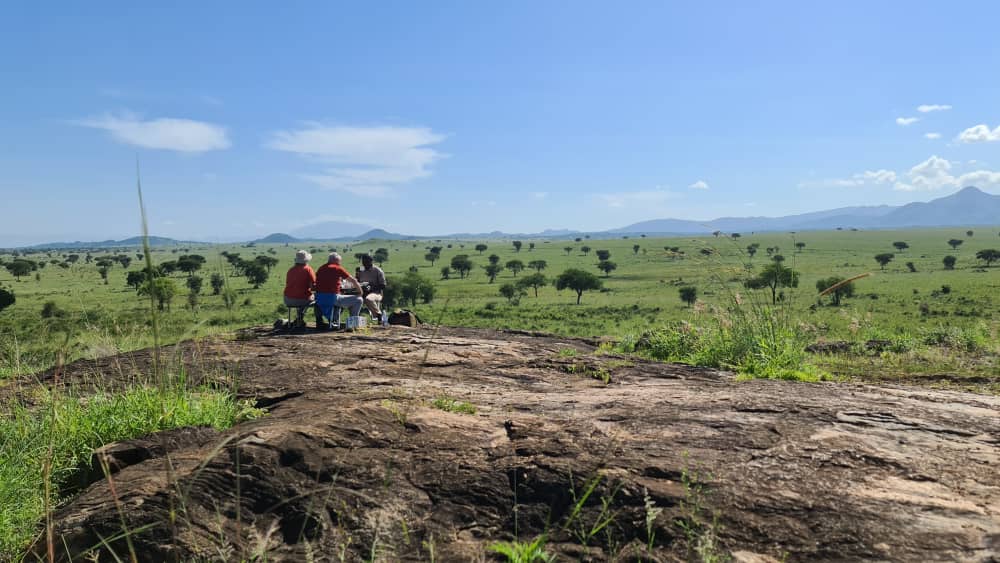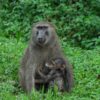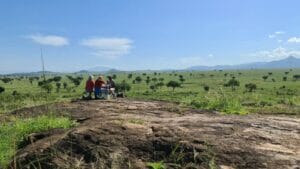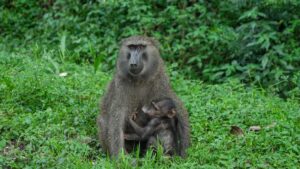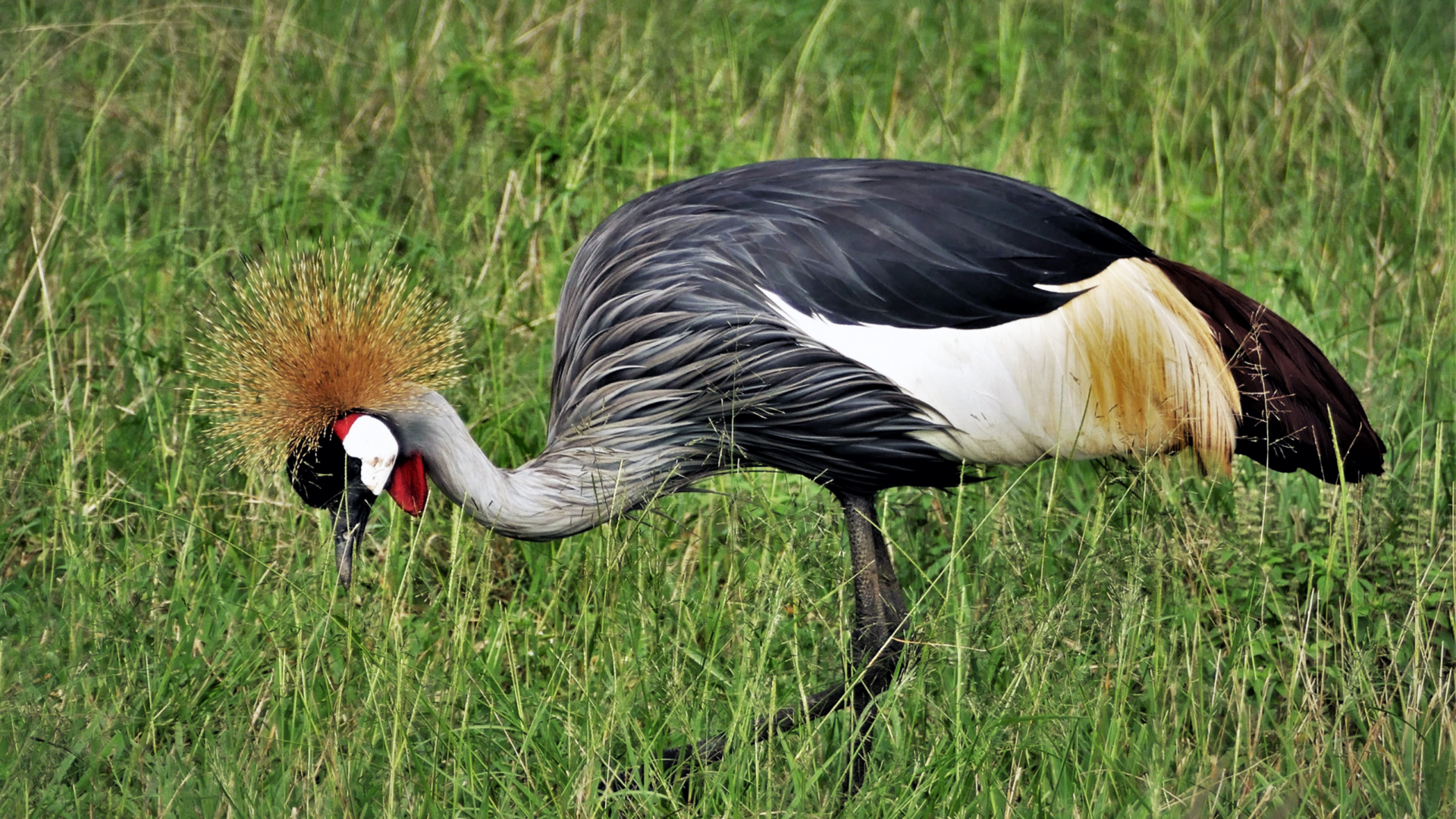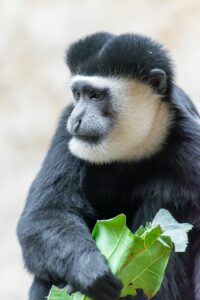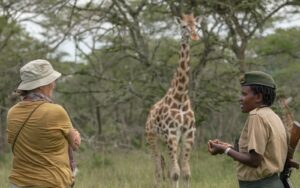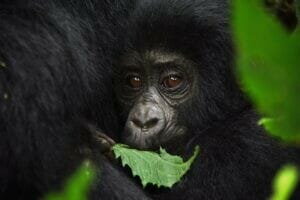Thinking about going on safari and wondering where to see an African leopard in Uganda?
You’re in luck! As a Uganda-based safari operator, we’ve got you covered on where to see the African leopard, a magnificent and elusive creature, known for its stunning beauty and stealthy nature.
In this post, we will explore the best time to see these incredible creatures, the top leopard habitats in Uganda, and provide valuable advice for leopard spotting. Additionally, we will shed light on the conservation efforts being made to protect the African leopard population in Uganda and how tourists can contribute to these efforts.
So, if you’re an avid wildlife enthusiast or simply have a passion for exploring the wonders of nature, this post is for you. Get ready to embark on an unforgettable journey in search of the African leopard – one of the Big 5 – in the heart of Uganda!
Introduction to the African Leopard
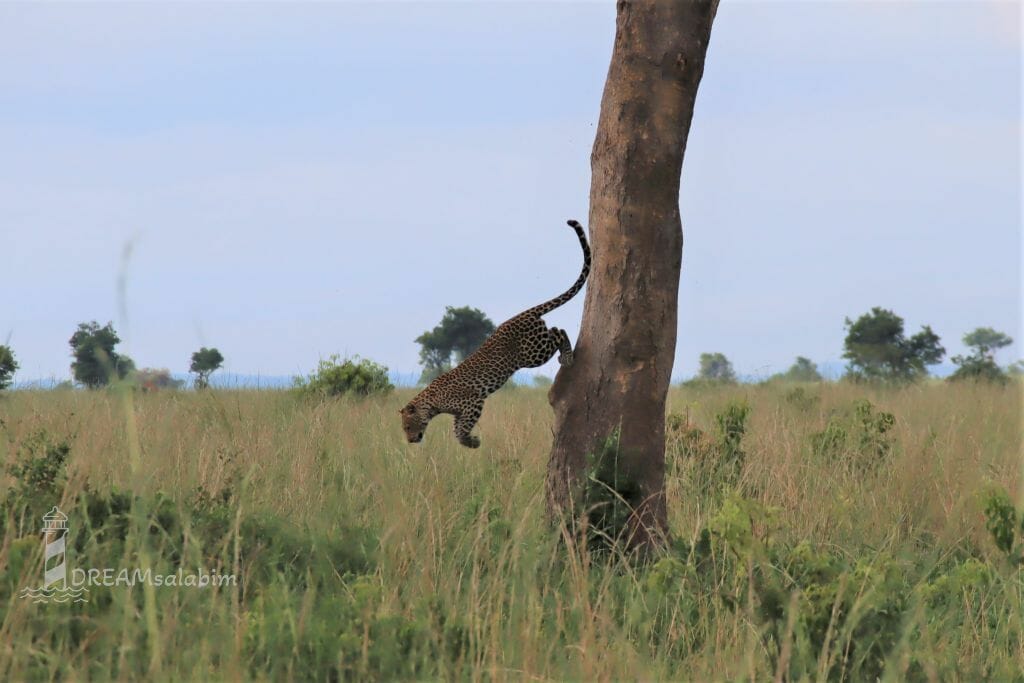
The African leopard (Panthera pardus pardus) is a large and powerful feline that roams the diverse landscapes of Uganda. Renowned for its striking beauty and remarkable adaptability, the African leopard is a highly sought-after creature for wildlife enthusiasts and photographers alike.
With its distinctive rosette-patterned coat, muscular build, and keen senses, the African leopard is perfectly suited for a life of stealth and survival. These solitary and elusive creatures are known for their exceptional climbing abilities, allowing them to effortlessly navigate through trees and rocky terrains.
Found across various regions of Africa, including Uganda, the African leopard is a top predator and plays a crucial role in maintaining the balance of the ecosystem. As an apex predator, it helps control the population of herbivores, ensuring the health and sustainability of the natural habitat.
The African leopard is a highly adaptable species, capable of thriving in a range of habitats, from dense forests to open savannahs. In Uganda, this majestic creature can be found in several national parks and reserves, offering visitors a chance to witness its beauty in its natural habitat.
As we delve deeper into this blog post, we will provide you with valuable information on the best time to see African leopards in Uganda, the top leopard habitats in the country, and essential advice for successful leopard spotting. So, get ready to embark on an adventure to witness the awe-inspiring African leopard in all its glory.
Best Time to See African Leopards in Uganda
The best time to see African leopards in Uganda is crucial for maximizing your chances of encountering these elusive creatures.
While leopards can be spotted throughout the year, certain factors influence their visibility and behavior, making specific months more favorable for sightings. In this section, we will discuss the seasonality of leopard sightings, the best months for spotting them, and the impact of weather conditions on their activity.
Seasonality and Leopard Sightings
Understanding the seasonal patterns can significantly enhance your chances of sighting African leopards in Uganda. During the dry season, when water sources become scarce, leopards are drawn to areas with a higher concentration of prey. This makes it easier to locate them as they tend to stay near waterholes and rivers in search of food.
Best Months for Leopard Spotting
The dry season in Uganda typically runs from June to September and December to February, making these months the prime time for leopard sightings. The scarcity of water compels leopards to venture out in search of prey, increasing the likelihood of encounters. Additionally, the vegetation tends to be less dense during these months, allowing for better visibility.
Weather Conditions
Weather conditions can also affect leopard sightings. Heavy rainfall during the wet season from March to May and October to November can make it challenging to spot leopards due to thick foliage and difficult terrain. However, scattered showers during the dry season can be beneficial as they create temporary water sources, attracting both leopards and their prey.
It is important to note that while the dry season offers the best chances of leopard sightings, it is also the peak tourist season in Uganda. Therefore, it is advisable to plan your visit well in advance and book accommodations and safari tours ahead of time.
By considering the seasonality, best months, and weather conditions, you can optimize your opportunities for spotting African leopards in Uganda. Prepare yourself for an unforgettable adventure as we explore the top leopard habitats in the country in the following section.
Top Leopard Habitats in Uganda

Uganda is blessed with a variety of national parks and reserves that provide excellent habitats for African leopards. In this section, we will highlight three of the top leopard habitats in the country, offering you insights into the unique features and characteristics of each location.
Queen Elizabeth National Park
Queen Elizabeth National Park, located in southwestern Uganda, is renowned for its incredible biodiversity and diverse wildlife. This park is home to a sizable leopard population, making it an ideal destination for leopard enthusiasts. The park’s varied terrain, which includes savannahs, forests, and wetlands, provides a perfect habitat for leopards to thrive. Exploring the Ishasha sector of the park, where the famous tree-climbing lions can also be found, increases your chances of encountering these elusive creatures.
Murchison Falls National Park
Situated in northern Uganda, Murchison Falls National Park is the largest and oldest national park in the country. This park, encompassing a vast area of savannah grasslands, woodlands, and the powerful Murchison Falls, is known for its remarkable wildlife diversity. Leopards can be spotted here, particularly around the Nile River and its surrounding areas. Embarking on a boat safari along the river or venturing out on game drives in the early morning or late afternoon increases the likelihood of leopard sightings.
Kidepo Valley National Park
Kidepo Valley National Park, located in northeastern Uganda, is a hidden gem that offers a unique and less crowded safari experience. This remote park is characterized by vast open plains, rugged mountains, and dramatic valleys, creating an enchanting backdrop for wildlife enthusiasts. The park is home to a healthy leopard population, and with its pristine and untouched landscapes, it provides an excellent opportunity for sightings. Exploring the Narus Valley and the Kidepo River provides the best chances of encountering leopards in their natural habitat.
These three national parks are just a few examples of the top leopard habitats in Uganda. However, it is important to note that leopards are highly adaptable creatures and can be found in other reserves and protected areas across the country. Consulting with local guides and tour operators will help you identify additional leopard hotspots and tailor your itinerary accordingly.
Now that we have explored some of the top leopard habitats in Uganda, let’s move on to the next section, where we will provide valuable advice for successful leopard spotting.
Advice for Leopard Spotting
Spotting African leopards in their natural habitat can be a thrilling and rewarding experience. However, due to their elusive nature, it requires patience, preparation, and knowledge. In this section, we will provide you with valuable advice to increase your chances of successful leopard spotting in Uganda.
Safety Precautions
When venturing into leopard habitats, it is essential to prioritize safety. Leopards are wild animals, and while they typically avoid human interaction, it is crucial to exercise caution and respect their space. Always follow the guidance of experienced guides and rangers and maintain a safe distance from the animals. Avoid any sudden movements or loud noises that may startle them. Remember, observing these majestic creatures from a safe distance ensures the well-being of both you and the leopards.
Guided Tours vs. Independent Exploration
Opting for guided Uganda safaris led by experienced wildlife guides and rangers significantly increases your chances of spotting leopards. These experts possess extensive knowledge of the area, animal behavior, and the best locations for sightings. They can track leopard movements, interpret signs, and provide valuable insights during your safari. However, if you choose to explore independently, it is essential to familiarize yourself with the specific leopard habitat you plan to visit and seek advice from local experts or park authorities.
Equipment and Preparation
Preparing the right equipment and being properly equipped for your leopard spotting adventure is crucial. Here are some essential items to consider:
- Binoculars or a spotting scope: These will allow you to observe leopards from a distance without disturbing them.
- Camera with telephoto lens: Capturing stunning photographs of leopards requires a good telephoto lens for close-up shots.
- Comfortable clothing: Dress in neutral colors that blend with the environment, and wear comfortable, breathable clothing suitable for the climate and terrain.
- Sturdy footwear: Opt for closed-toe shoes or boots that provide support and protection during walks or game drives.
- Insect repellent: Protect yourself from mosquitoes and other insects by applying a reliable insect repellent.
- Drinking water and snacks: Stay hydrated and energized during your leopard spotting excursions.
Before embarking on your journey, research the specific requirements of the park or reserve you plan to visit. Familiarize yourself with the rules and regulations, obtain the necessary permits, and ensure you have comprehensive travel insurance.
By following these safety precautions, considering guided tours, and being well-prepared with the right equipment, you are setting yourself up for a successful leopard spotting experience in Uganda.
In the next section, we will discuss the conservation efforts being made to protect African leopards in Uganda and how tourists can contribute to these initiatives.
Conservation Efforts for African Leopards in Uganda
The conservation of African leopards in Uganda is of paramount importance to ensure the survival and long-term well-being of these magnificent creatures. In this section, we will delve into the threats facing the African leopard population, highlight the ongoing conservation efforts both locally and internationally, and discuss how tourists can contribute to these initiatives.
Threats to the African Leopard Population
African leopards face various threats that have led to a decline in their population. Habitat loss and fragmentation due to human activities, such as deforestation, agriculture expansion, and urbanization, pose a significant challenge. Additionally, illegal hunting, poaching for their skins and body parts, and retaliatory killings by communities due to livestock predation further endanger leopard populations. Climate change and its impact on prey availability and habitat suitability also contribute to the challenges faced by leopards.
Local and International Conservation Efforts
In Uganda, several organizations and government agencies are actively engaged in conserving African leopards and their habitats. The Uganda Wildlife Authority (UWA) plays a vital role in protecting and managing national parks and reserves where leopards reside. UWA focuses on anti-poaching operations, habitat restoration, and community engagement to mitigate human-wildlife conflicts.
International organizations like the World Wildlife Fund (WWF) and Panthera also collaborate with local partners to support leopard conservation efforts in Uganda. These organizations work towards promoting sustainable land-use practices, wildlife research and monitoring, and community-based conservation initiatives. By partnering with local communities, these organizations aim to foster a sense of ownership and promote livelihood alternatives that reduce dependence on leopard habitats.
How Tourists Can Help
Tourists visiting Uganda can actively contribute to leopard conservation efforts in several ways. Here are some ways you can make a positive impact:
- Choose responsible tourism operators: Opt for tour operators and accommodations that prioritize sustainable practices and support local conservation initiatives.
Follow ethical wildlife viewing guidelines: Respect the animals’ space, adhere to park rules, and never feed or disturb the leopards or any other wildlife.
- Support local communities: Engage in community-based tourism activities that directly benefit local communities and contribute to their well-being, reducing the need for harmful practices like poaching.
- Education and awareness: Learn about leopard conservation and share your knowledge with others. By raising awareness about the importance of leopard conservation, you can inspire others to protect these magnificent creatures.
Volunteering and donations: Consider volunteering your time and skills with conservation organizations in Uganda. Alternatively, you can contribute financially to support their initiatives.
Remember, responsible and sustainable tourism practices not only protect leopards but also contribute to the overall conservation of Uganda’s rich biodiversity.
Join Kikooko Africa Safaris And Come Spot African Leopards in Uganda
As we conclude this blog post, we hope that through our exploration of leopard habitats, advice for successful spotting, and understanding of conservation efforts, you are inspired to embark on a journey to witness the beauty of African leopards in Uganda. By appreciating these magnificent creatures and supporting their conservation, we can ensure a brighter future for African leopards in their natural habitat.
Experience East Africa by booking a safari with Kikooko Africa Safaris, a locally owned and operated safari company based in Uganda.

